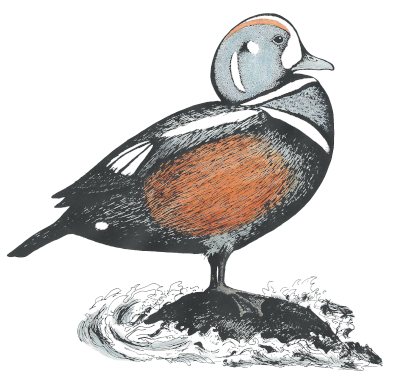
Ericaceae - Heath family
[information to be added]
Mount Desert Island is home to 30 species in 18 genera. Click on a link below or scroll down for more information.
Andromeda (1 species)
Andromeda polifolia - bog-rosemary (occasional [see note 1 at bottom of page])
Arctostaphylos (1 species)
Arctostaphylos uva-ursi - red bearberry (occasional)
Calluna (1 species)
Calluna vulgaris - heather (rare)
Chamaedaphne (1 species)
Chamaedaphne calyculata - leatherleaf (common)
Chimaphila (1 species)
Chimaphila umbellata - noble prince's-pine (rare)
Corema (1 species)
Corema conradii - broom-crowberry (uncommon)
Empetrum (1 species)
Empetrum nigrum - black crowberry (common)
Epigaea (1 species)
Epigaea repens - trailing-arbutus (uncommon)
Gaultheria (2 species)
Gaultheria hispidula - creeping spicy-wintergreen (occasional)
Gaultheria procumbens - eastern spicy-wintergreen (common)
Gaylussacia (2 species)
Gaylussacia baccata - black huckleberry (common)
Gaylussacia bigeloviana - dwarf huckleberry (occasional)
Hypopitys (1 species)
Hypopitys monotropa - yellow pine-sap (uncommon)
Kalmia (2 species)
Kalmia angustifolia - sheep American-laurel (common)
Kalmia polifolia - bog American-laurel (occasional)
Moneses (1 species)
Moneses uniflora - one-flowered-shinleaf (uncommon)
Monotropa (1 species)
Monotropa uniflora - one-flowered Indian-pipe (occasional)
Orthilia (1 species)
Orthilia secunda - one-sided-shinleaf (uncommon)
Pyrola (3 species)
Pyrola americana - American shinleaf (occasional)
Pyrola chlorantha - green-flowered shinleaf (uncommon)
Pyrola elliptica - elliptic-leaved shinleaf (occasional)
Rhododendron (2 species)
Rhododendron canadense - rhodora (common)
Rhododendron groenlandicum - Labrador-tea (common)
Vaccinium (7 species)
Vaccinium angustifolium - common lowbush blueberry (common)
Vaccinium boreale - northern blueberry (rare)
Vaccinium corymbosum - highbush blueberry (common)
Vaccinium macrocarpon - large cranberry (common)
Vaccinium myrtilloides - velvet-leaved blueberry (occasional)
Vaccinium oxycoccos - small cranberry (common)
Vaccinium vitis-idaea - mountain cranberry (common)
Andromeda (bog-rosemary)
[information to be added]
Andromeda polifolia (bog-rosemary) - [information to be added]

(click on image to enlarge)
Arctostaphylos (bearberry)
[information to be added]
Arctostaphylos uva-ursi (red bearberry) - [information to be added]
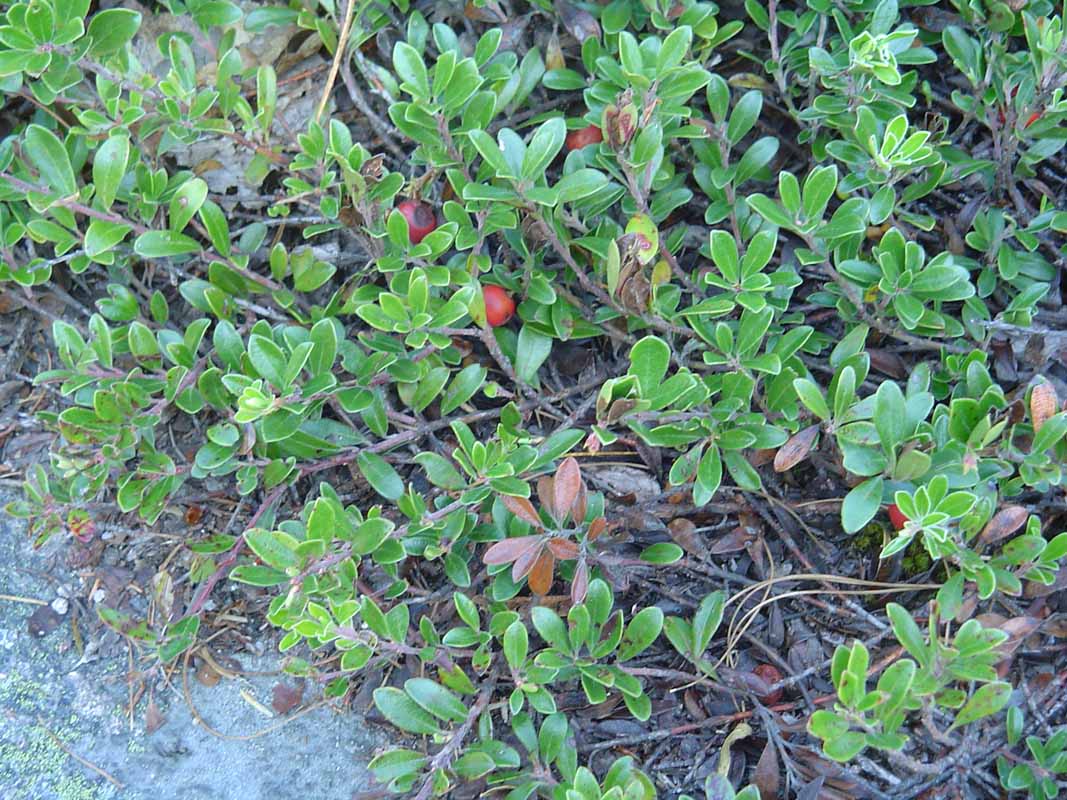
(click on image to enlarge)
Calluna (heather)
[information to be added]
Calluna vulgaris (heather) - [information to be added]
Chamaedaphne (leatherleaf)
[information to be added]
Chamaedaphne calyculata (leatherleaf) - [information to be added]
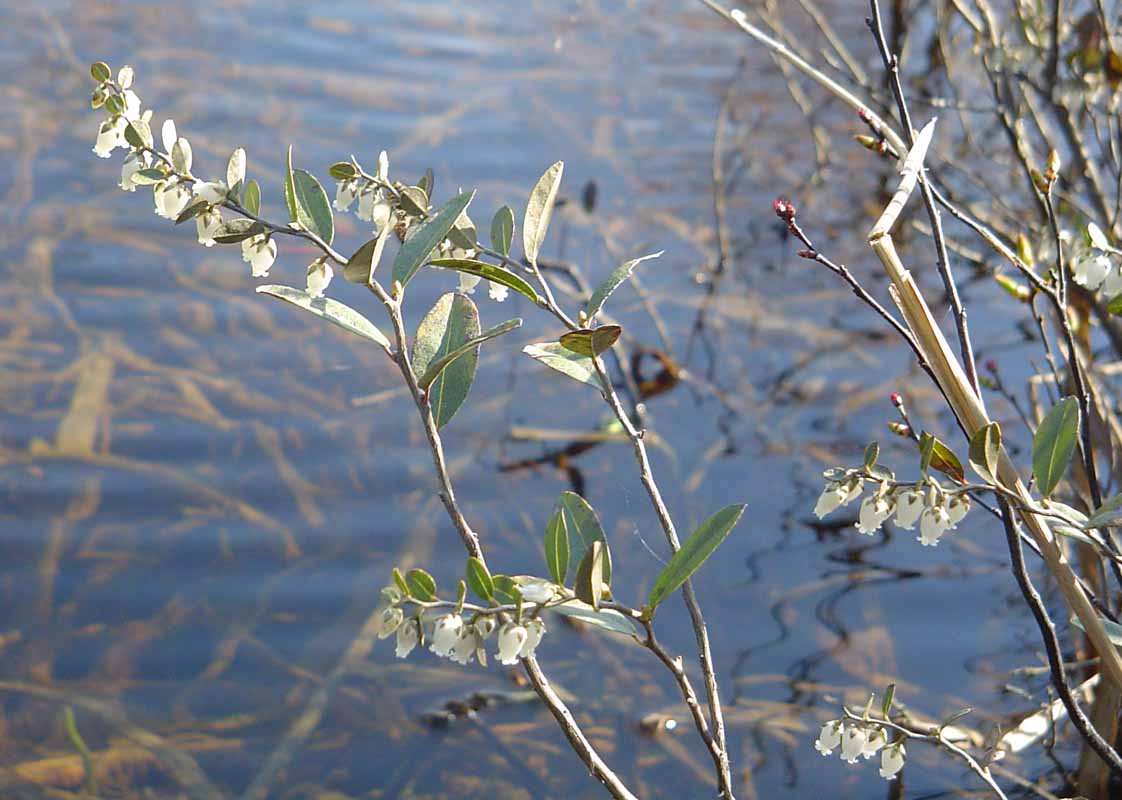
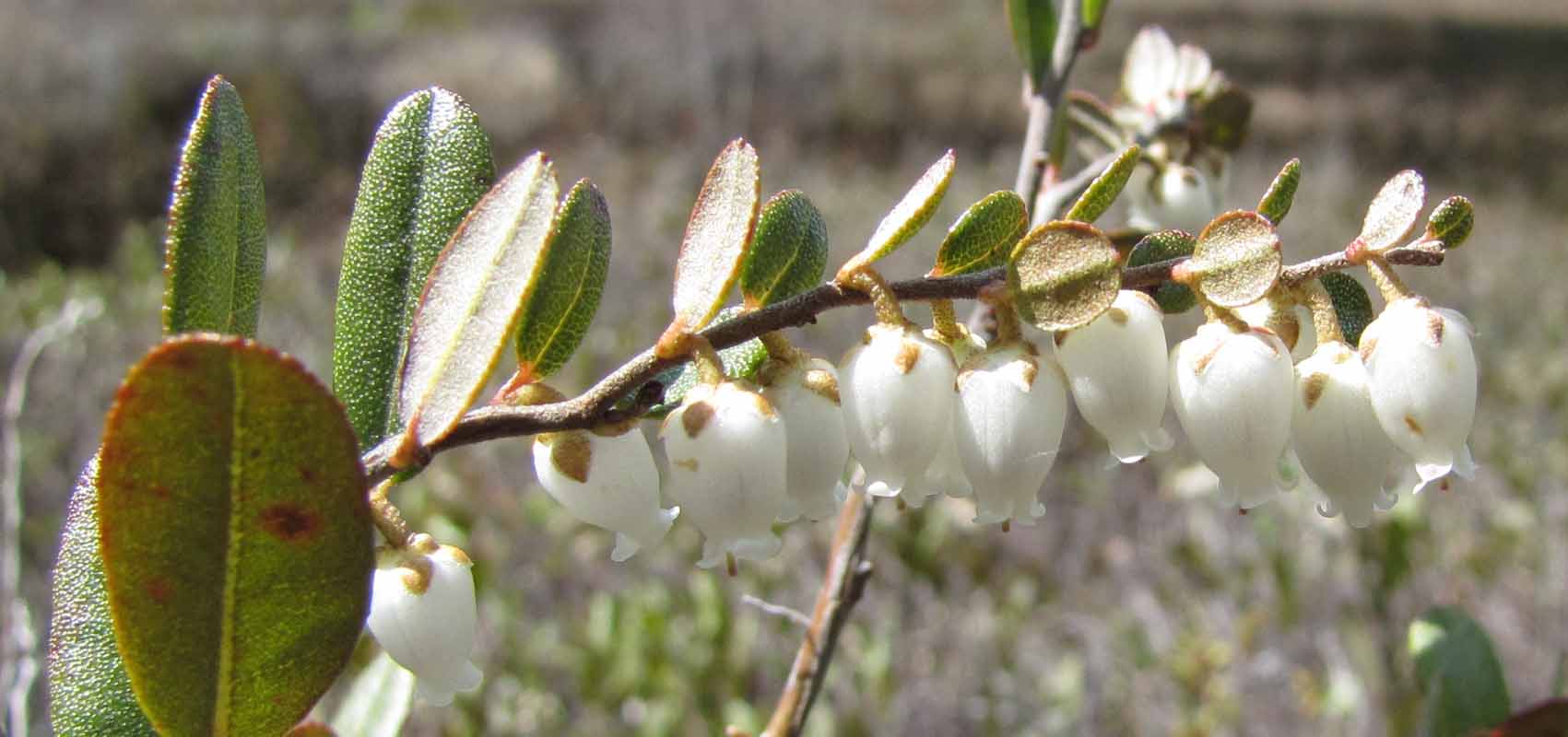
(click on an image to enlarge)
Chimaphila (prince's-pine)
[information to be added]
Chimaphila umbellata (noble prince's-pine) - [information to be added]
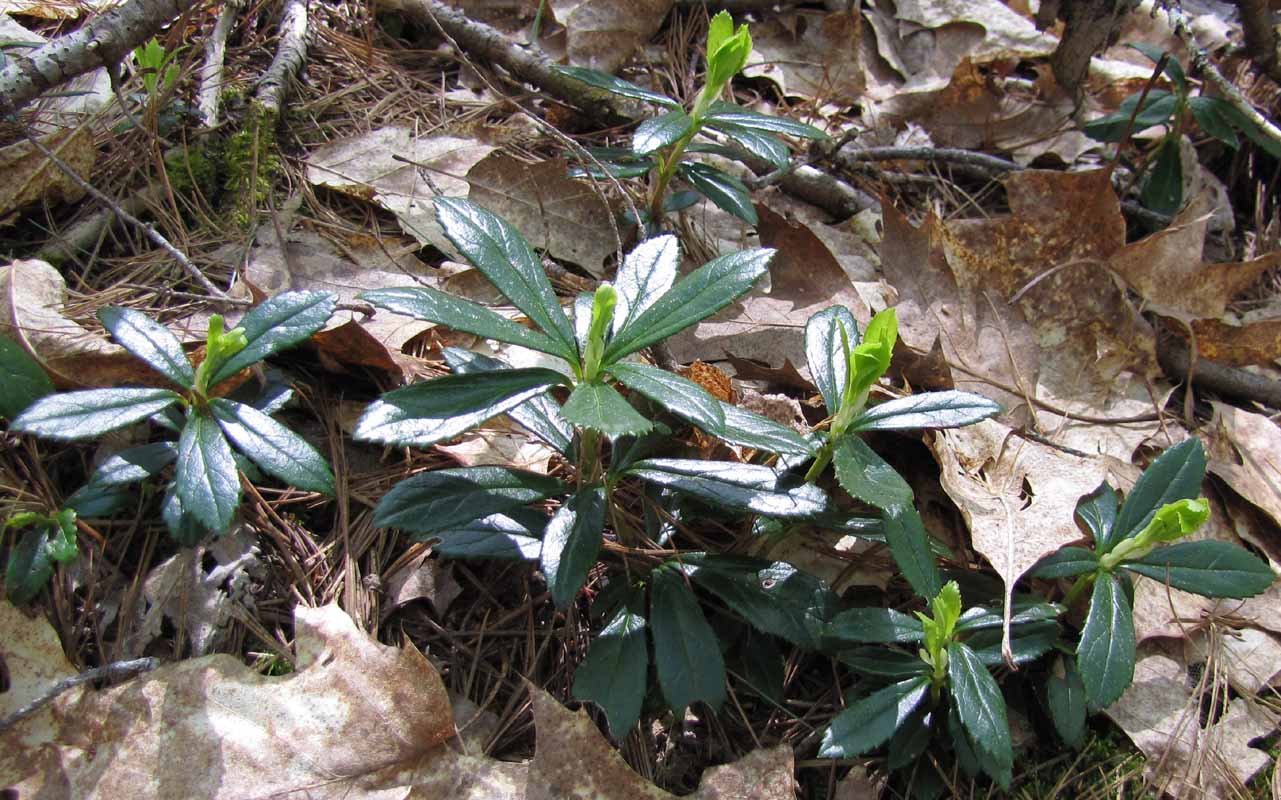
(click on image to enlarge)
Corema (broom-crowberry)
[information to be added]
Corema conradii (broom-crowberry) - [information to be added]
Empetrum (crowberry)
[information to be added]
Empetrum nigrum (black crowberry) - [information to be added]
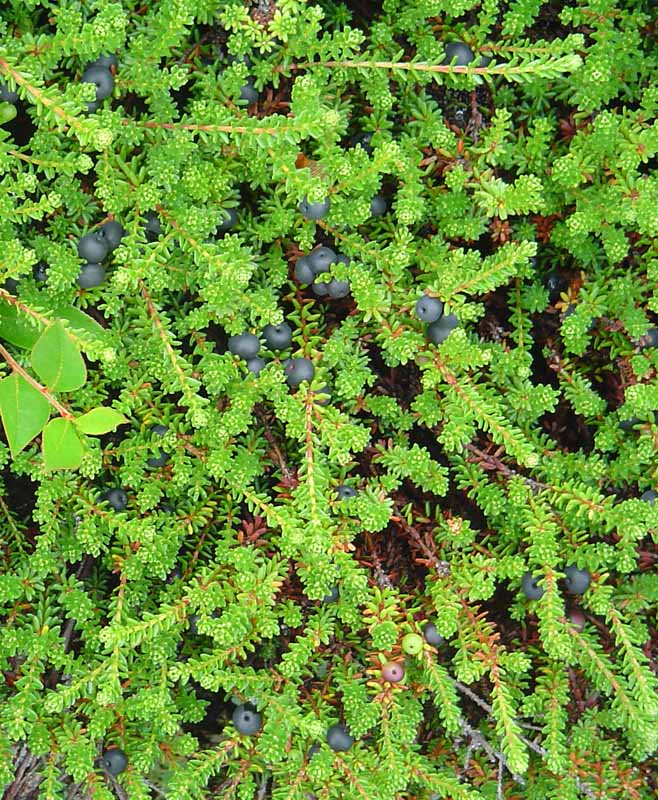
(click on image to enlarge)
Epigaea (trailing-arbutus)
[information to be added]
Epigaea repens (trailing-arbutus) - [information to be added]
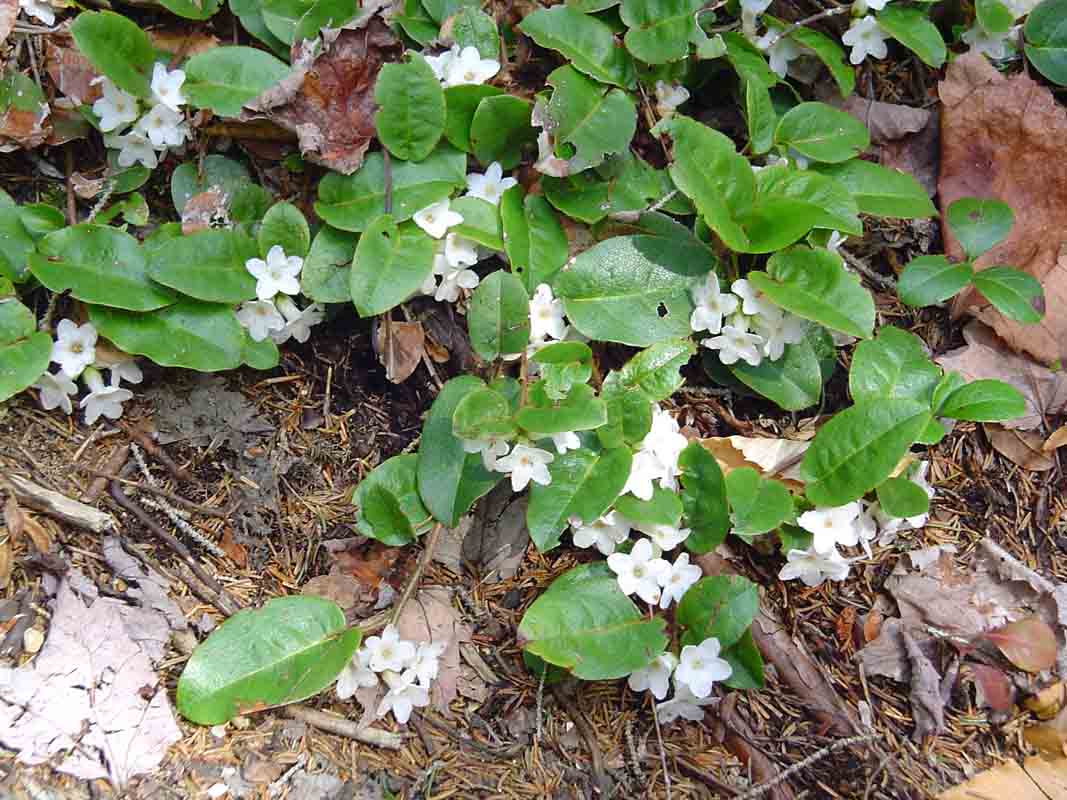
(click on image to enlarge)
Gaultheria (spicy-wintergreen)
[information to be added]
Gaultheria hispidula (creeping spicy-wintergreen) - [information to be added]
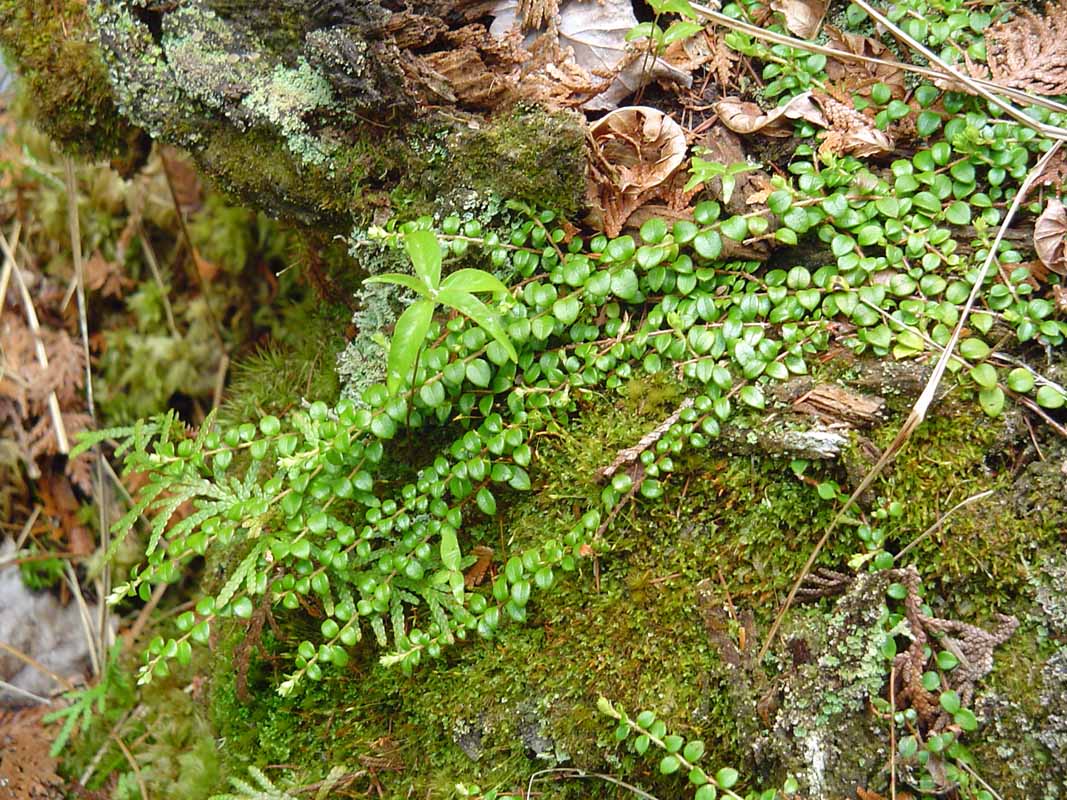
(click on image to enlarge)
Gaultheria procumbens (eastern spicy-wintergreen) - [information to be added]
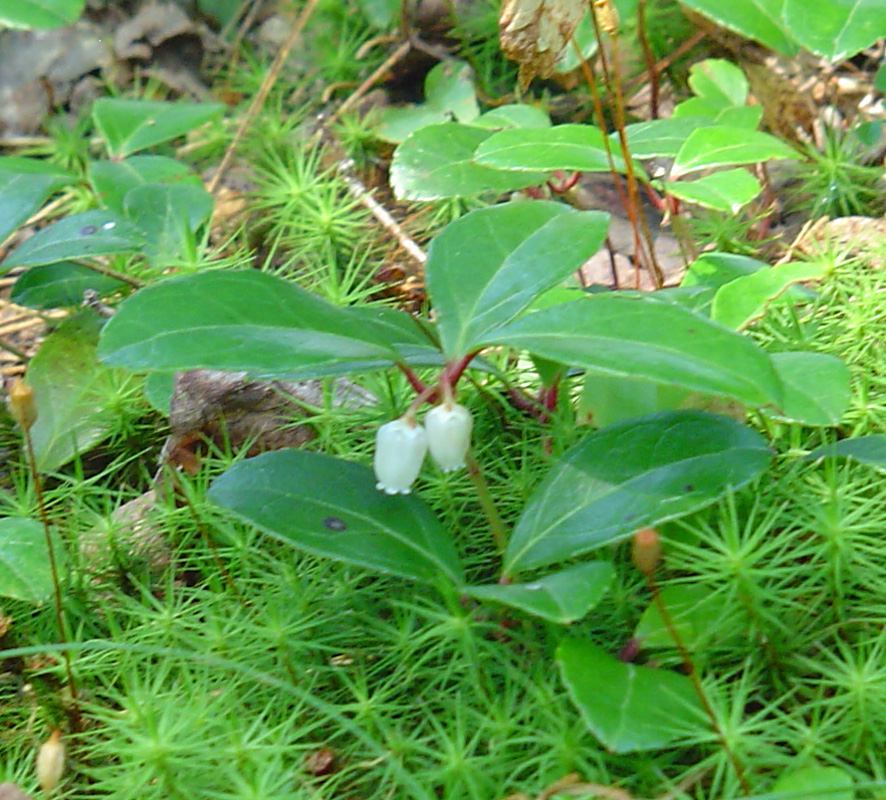
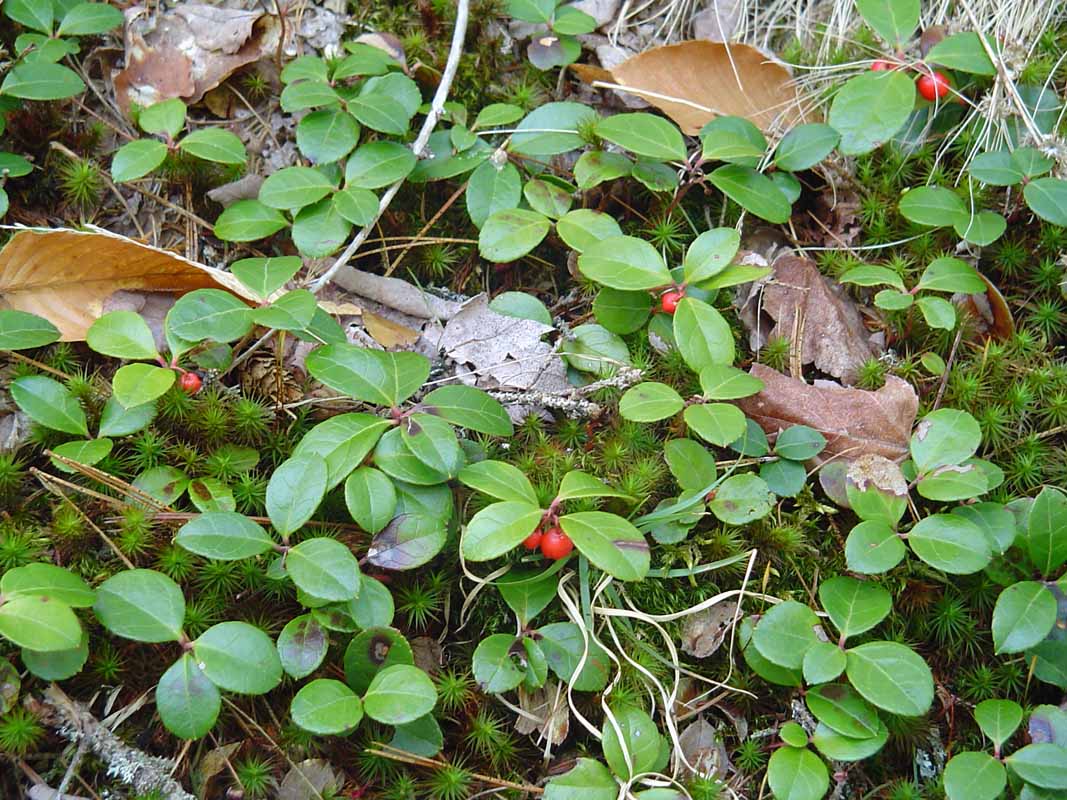
(click on an image to enlarge)
Gaylussacia (huckleberry)
[information to be added]
Gaylussacia baccata (black huckleberry) can be mistaken for Vaccinium corymbosum in the absence of flowers and fruits. However, it does not possess papillose twigs as V. corymbosum does (see image under V. angustifolium below).
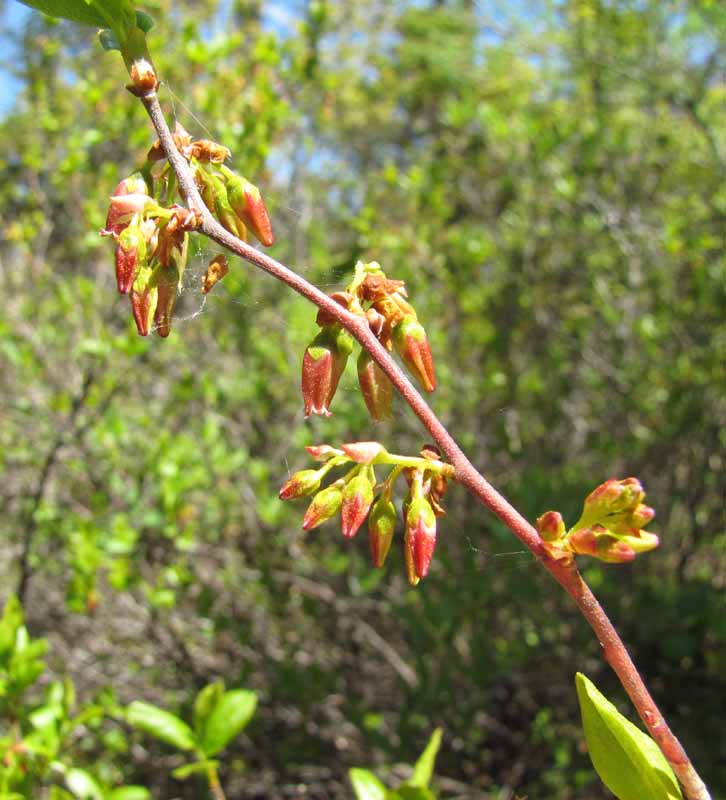
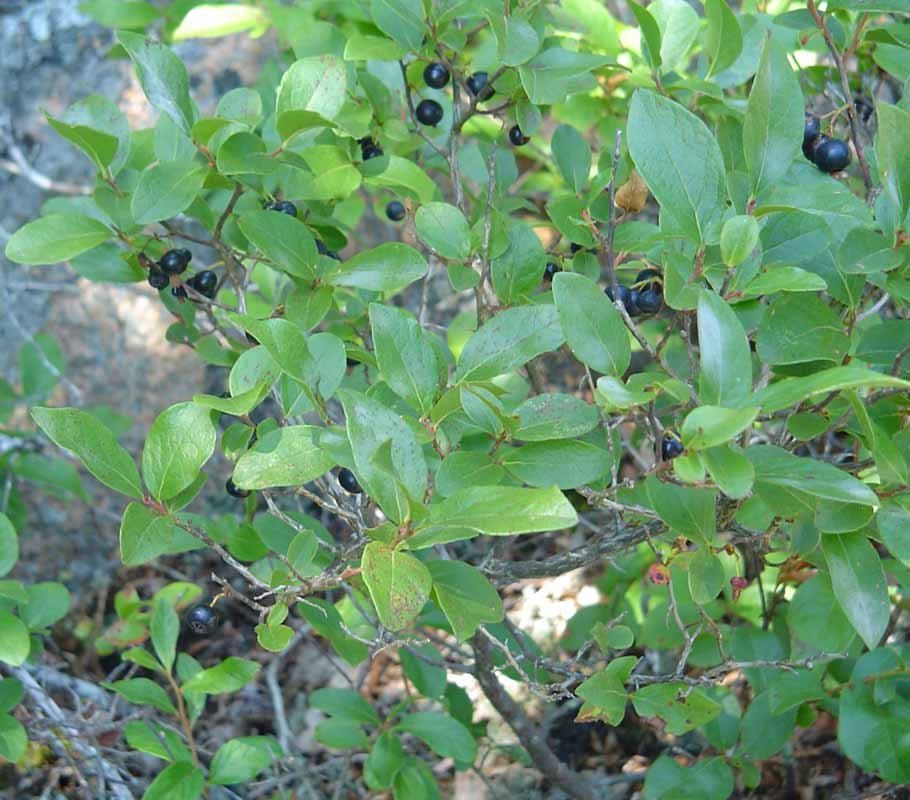
(click on an image to enlarge)
Gaylussacia bigeloviana (dwarf huckleberry) - [information to be added]
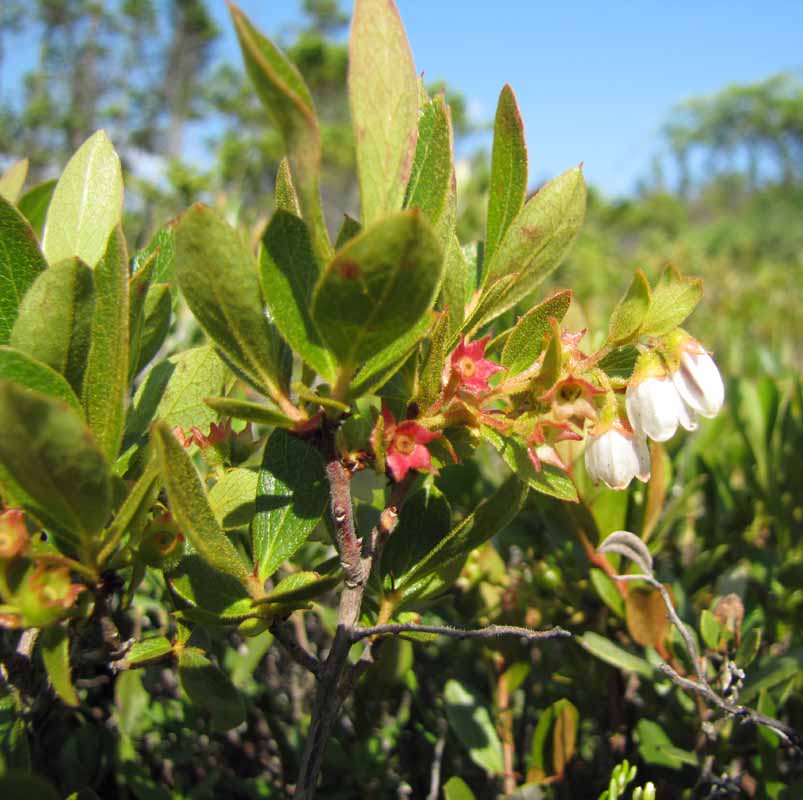
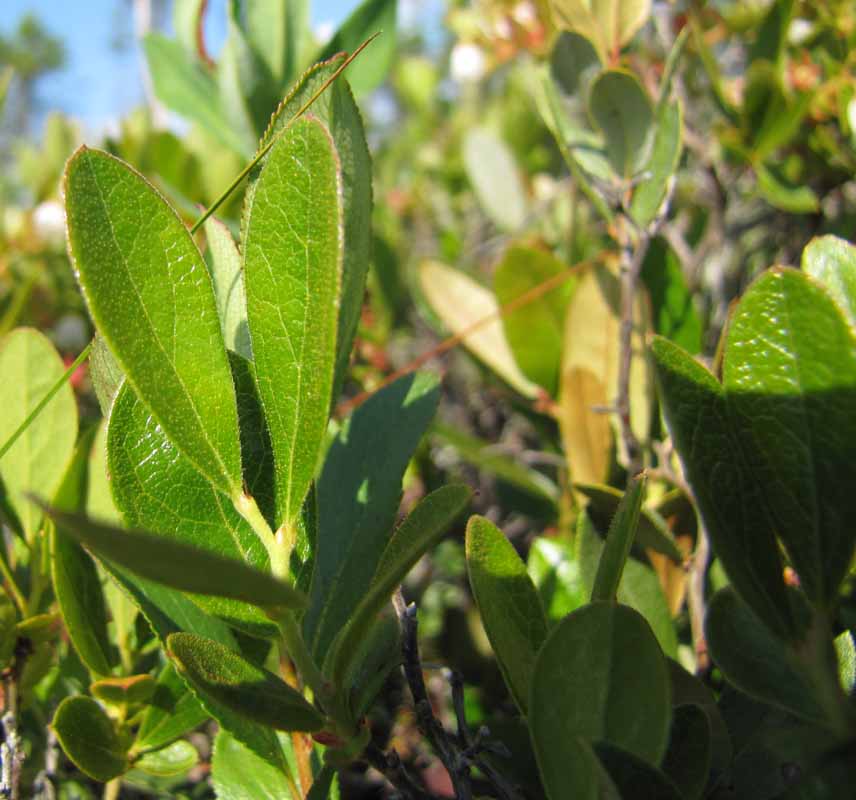
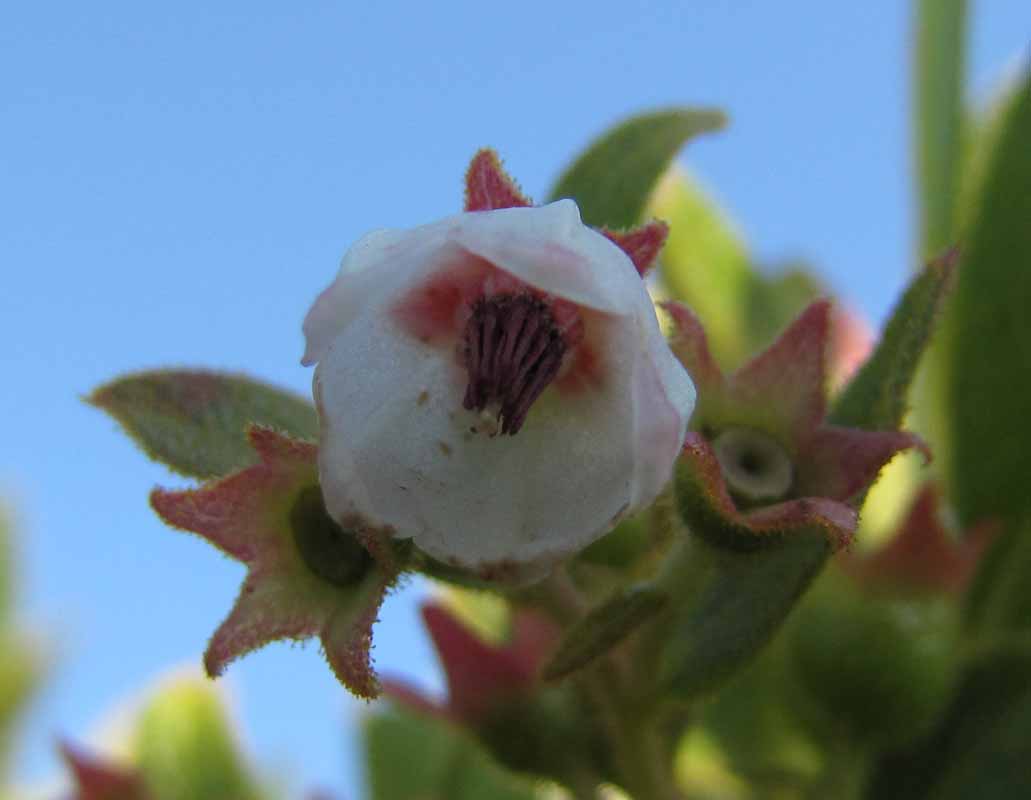
(click on an image to enlarge)
Hypopitys (pinesap)
[information to be added]
Hypopitys monotropa (yellow pinesap) - [information to be added]
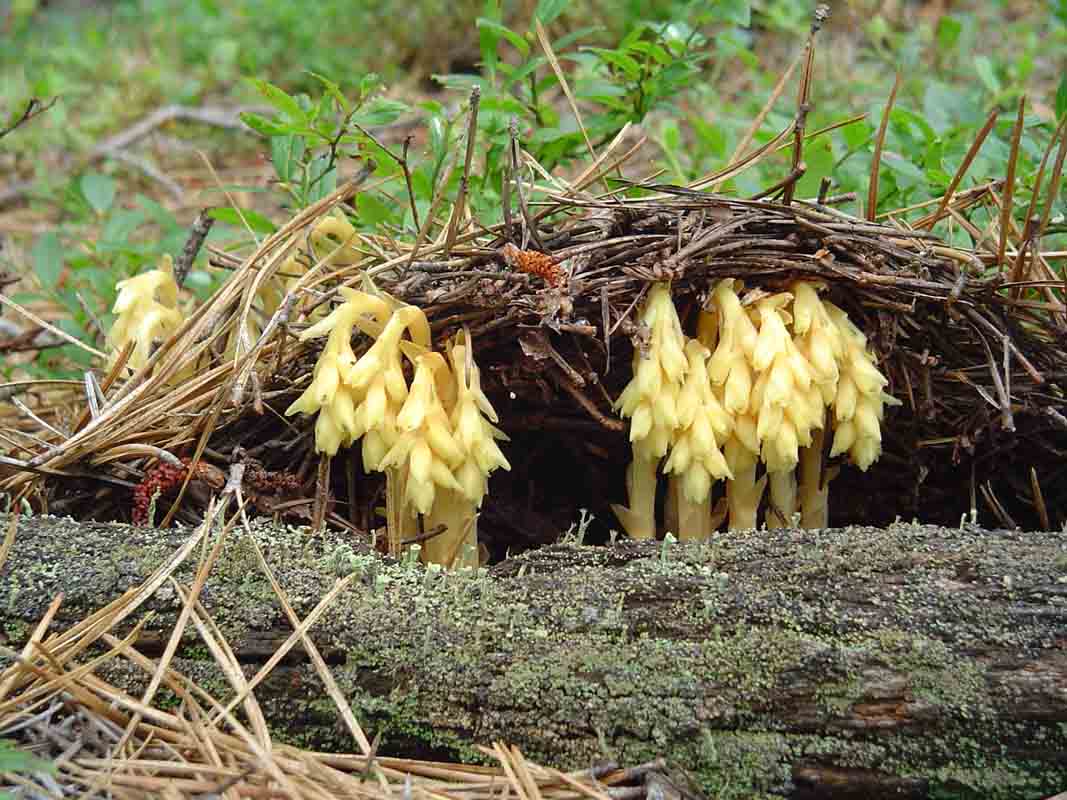
(click on image to enlarge)
Kalmia (American-laurel)
[information to be added]
Kalmia angustifolia (sheep American-laurel) - [information to be added]
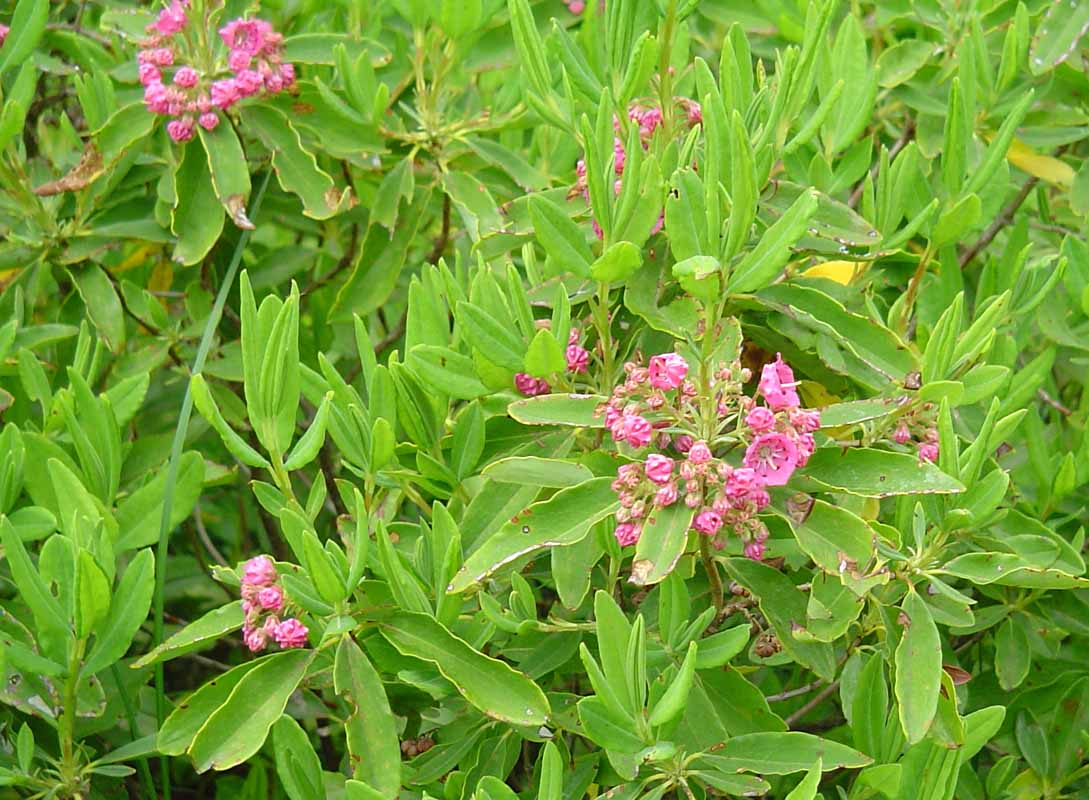
(click on image to enlarge)
Kalmia polifolia (bog American-laurel) - [information to be added]
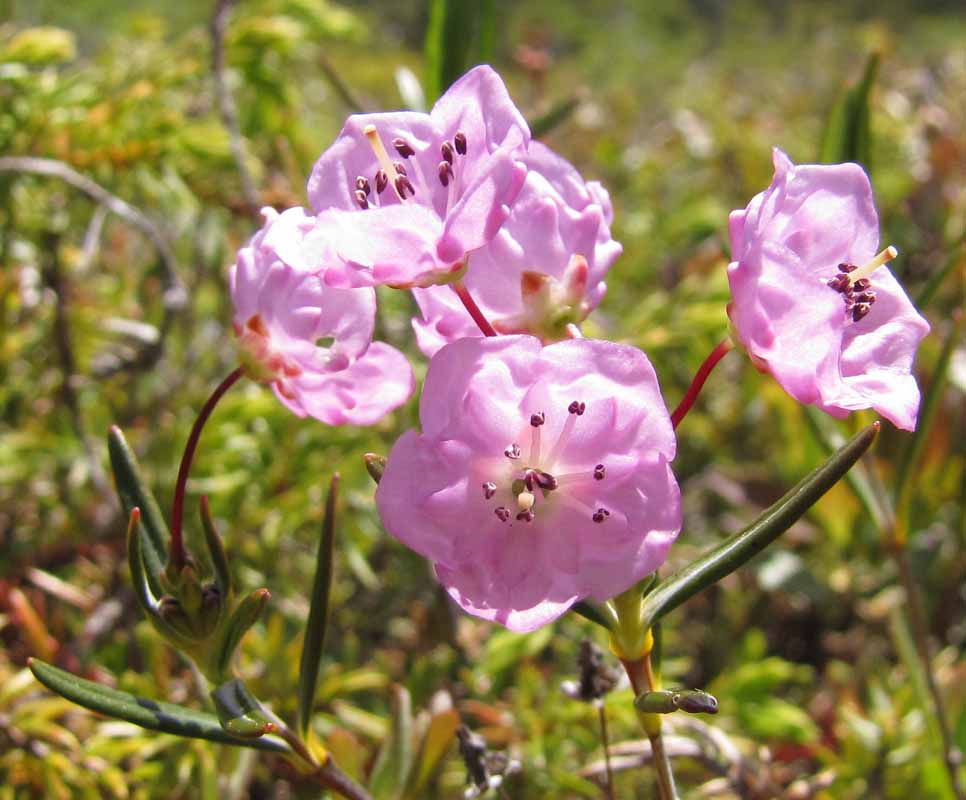
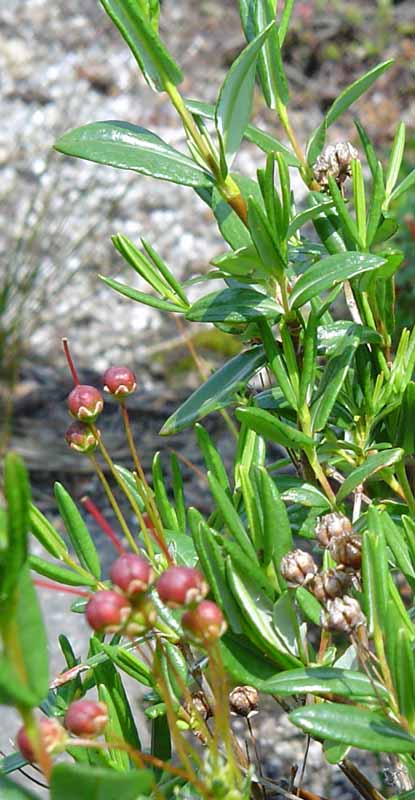
(click on an image to enlarge)
Moneses (one-flowered-shinleaf)
[information to be added]
Moneses uniflora (one-flowered-shinleaf) - [information to be added]
Monotropa (Indian-pipe)
[information to be added]
Monotropa uniflora (one-flowered Indian-pipe) - [information to be added]
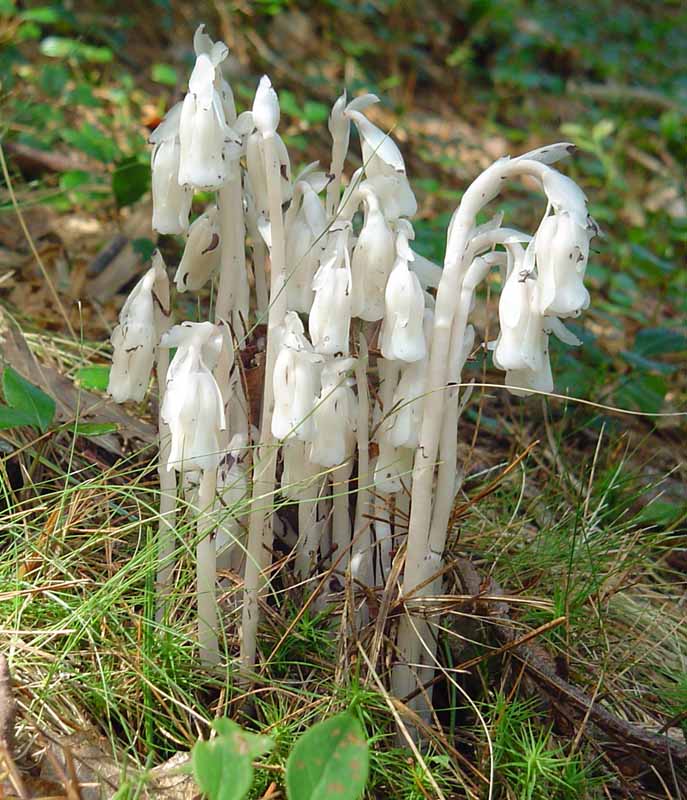
(click on image to enlarge)
Orthilia (one-sided-shinleaf)
[information to be added]
Orthilia secunda (one-sided-shinleaf) - [information to be added]
Pyrola (shinleaf)
[information to be added]
Pyrola americana (American shinleaf) - [information to be added]
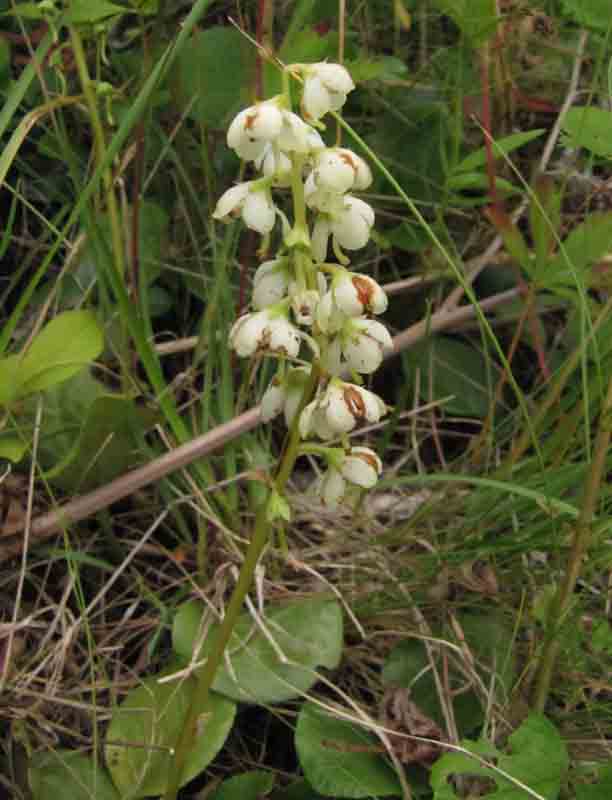
(click on image to enlarge)
Pyrola chlorantha (green-flowered shinleaf) - [information to be added]
Pyrola elliptica (elliptic-leaved shinleaf) - [information to be added]
Rhododendron (rhododendron)
[information to be added]
| leaf | petal color | |
| Rhododendron canadense | flat | magenta to pink |
| Rhododendron groenlandicum | revolute, with white (early in the season) or tan (later in the season) hairs beneath | white |
Rhododendron canadense (rhodora) - [information to be added]
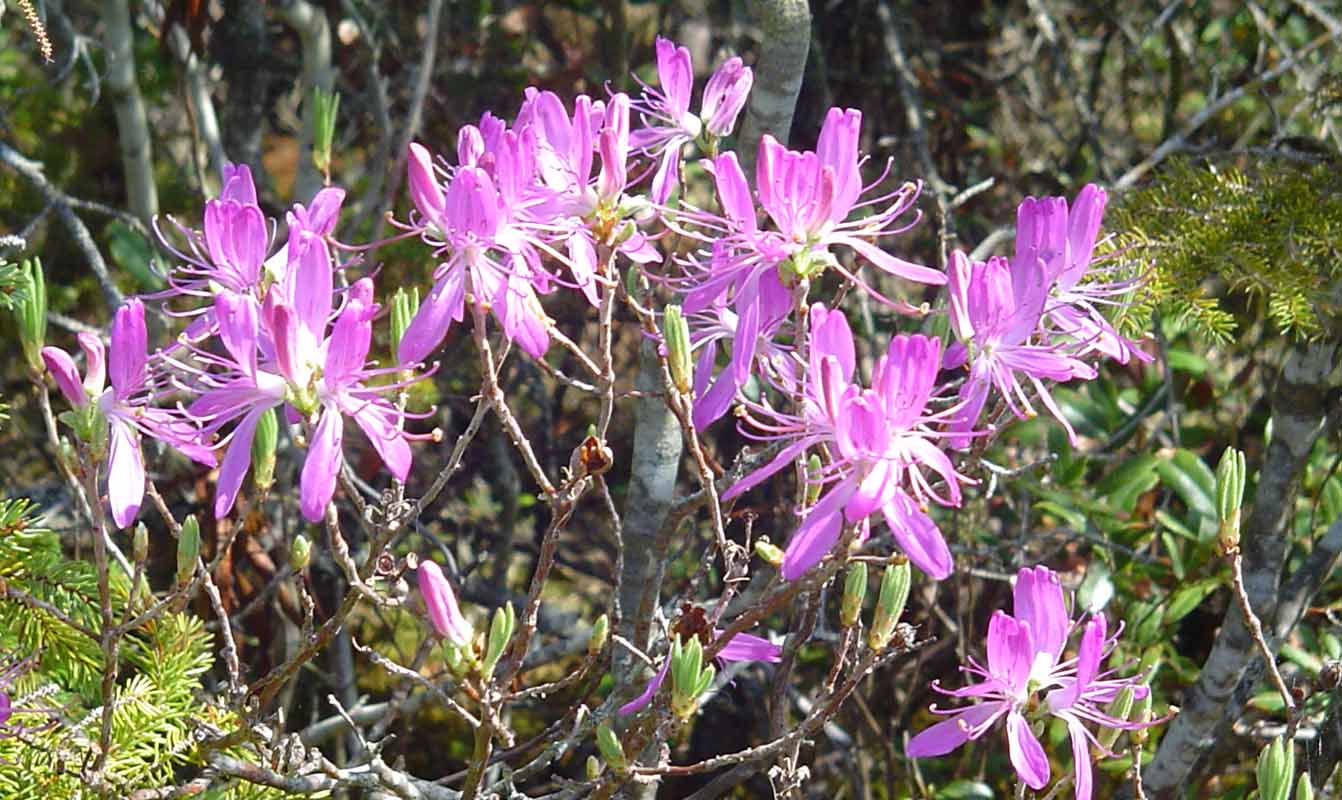
(click on image to enlarge)
Rhododendron groenlandicum (Labrador-tea) - [information to be added]
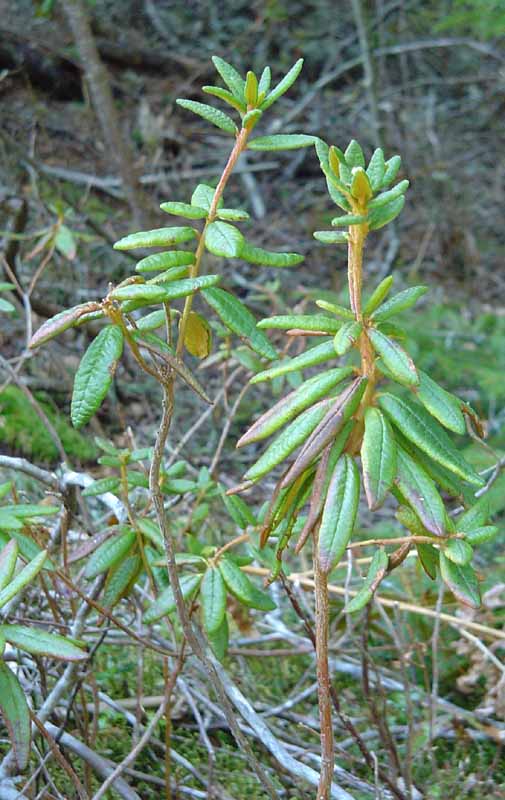
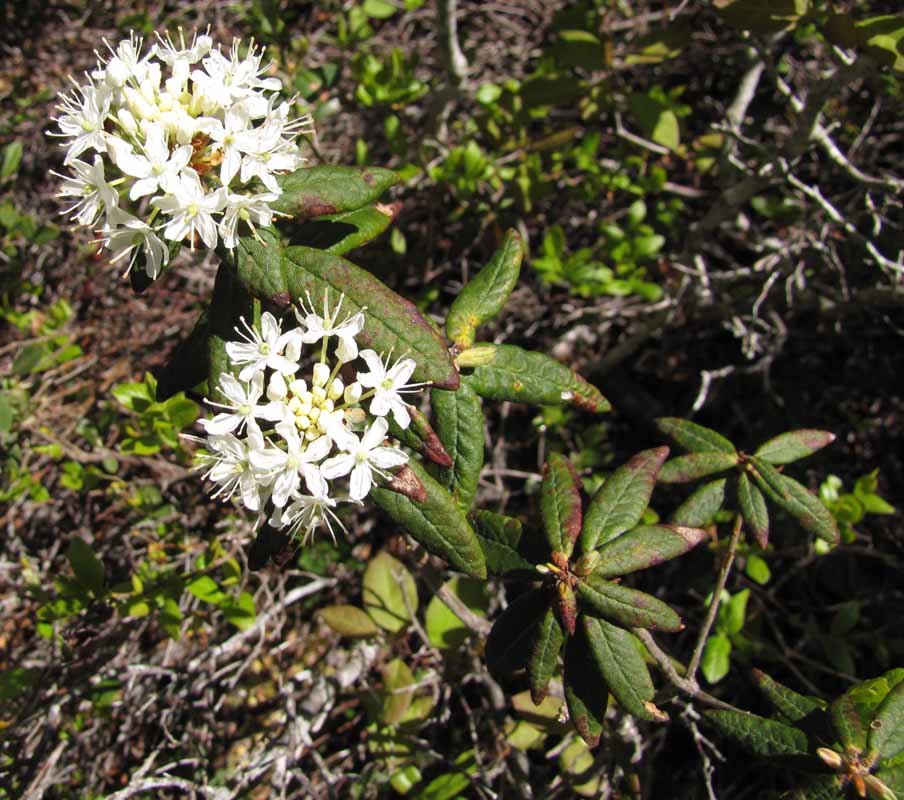
(click on image to enlarge)
Vaccinium (blueberry)
[information to be added]
Vaccinium angustifolium (common lowbush blueberry) thrives in the acidic soil of Mount Desert Island and begins flowering in mid-May. Fruit appears in mid- to late July.
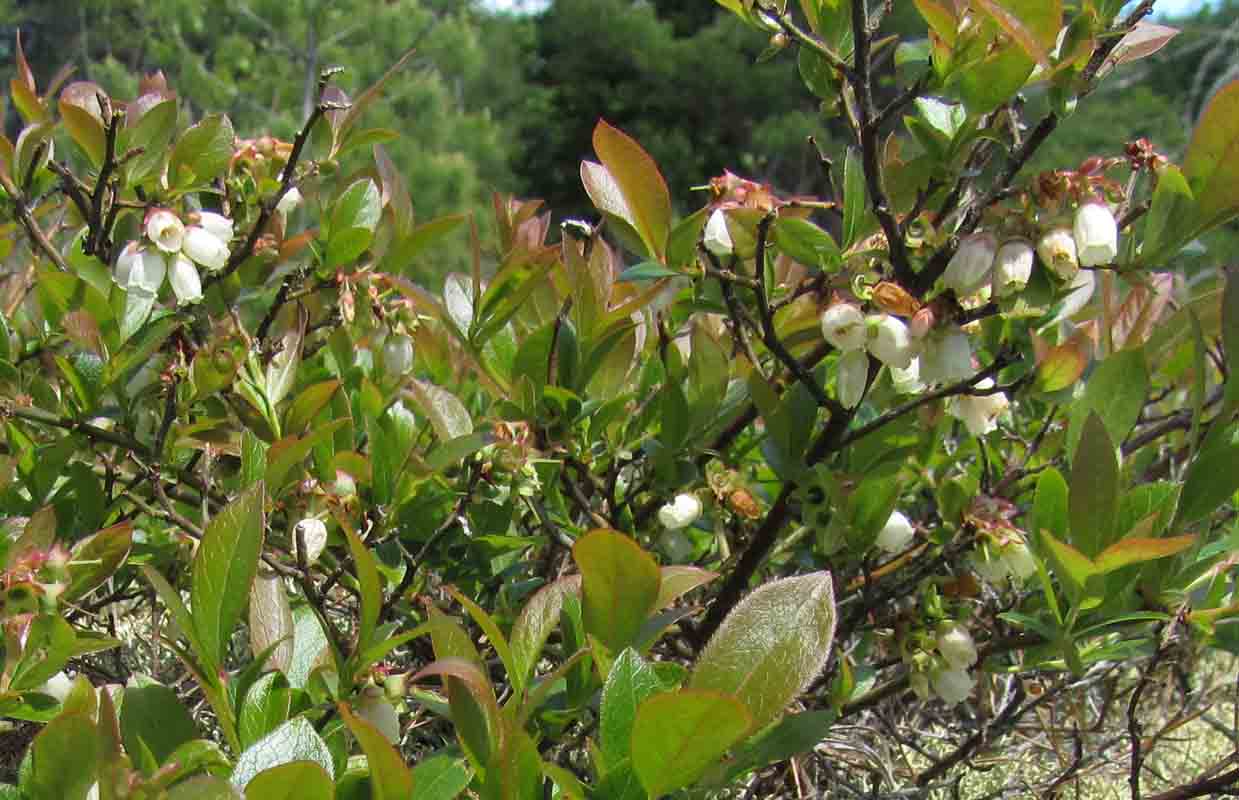
Two features of the common lowbush blueberry that require close inspection—a 14X hand lens is helpful—are the minutely toothed leaf margins and the papillose twigs. This latter feature is shared by Vaccinium boreale, V. corymbosum, and V. myrtilloides.

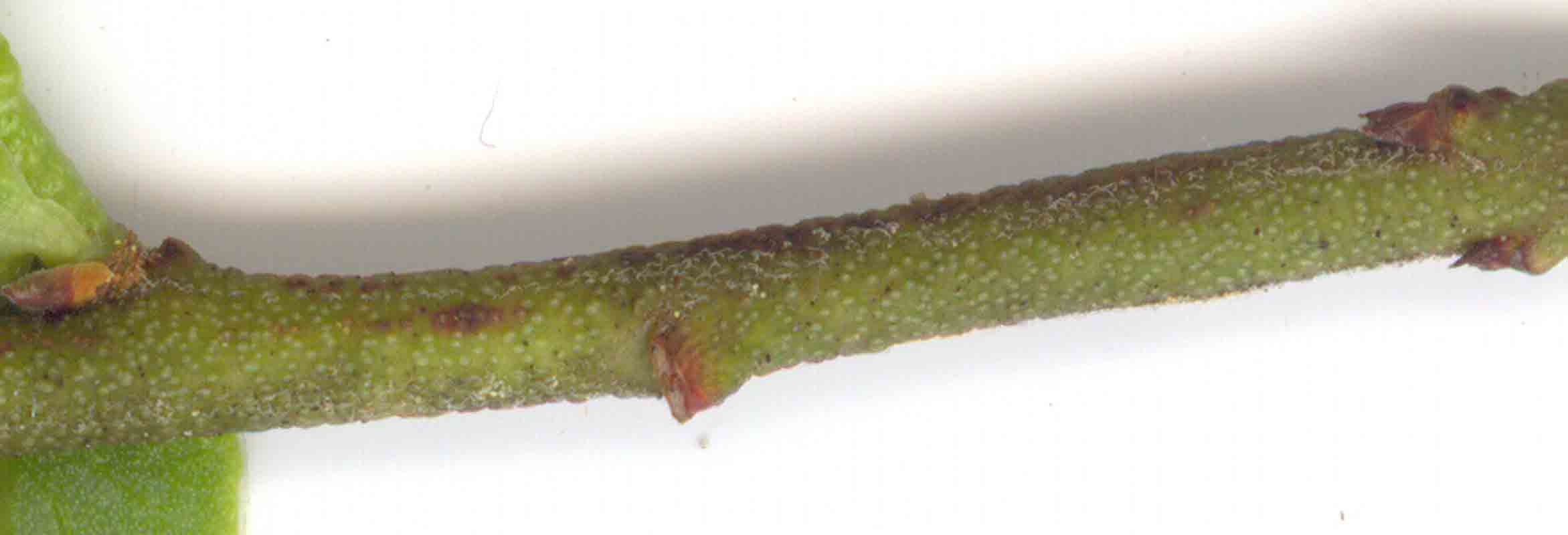
(click on image to enlarge)
Vaccinium boreale (northern blueberry) - [information to be added]
Vaccinium corymbosum (highbush blueberry) - [information to be added]
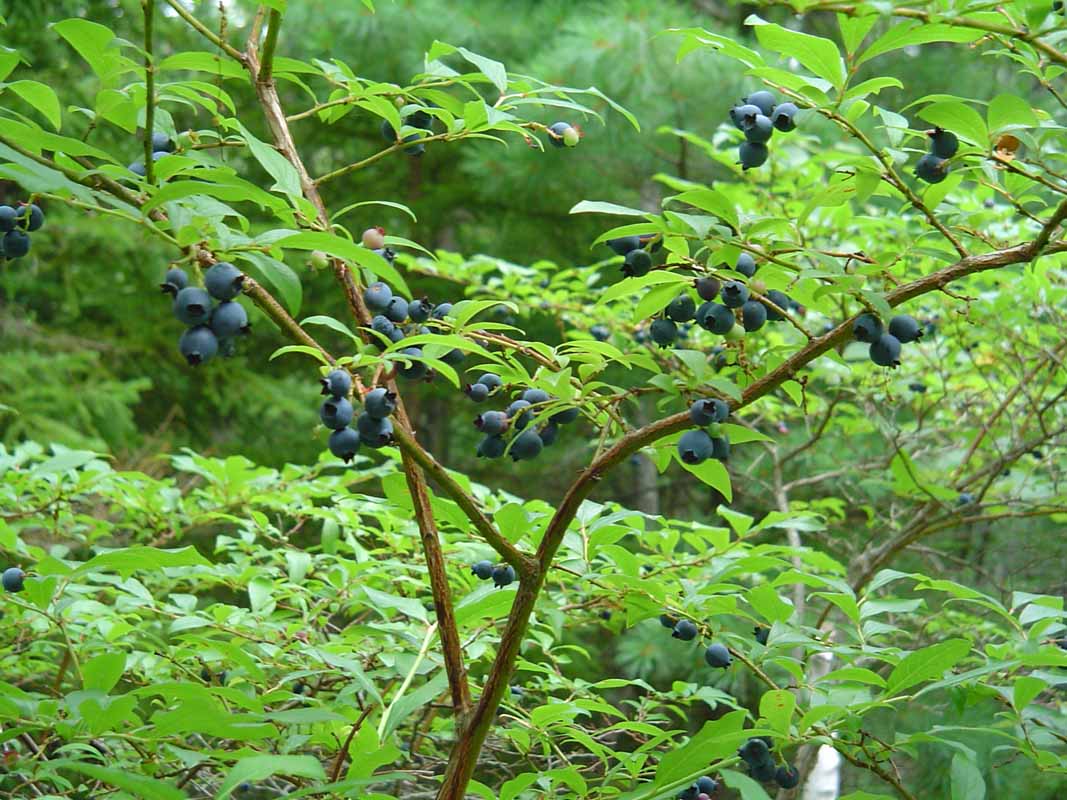
(click on image to enlarge)
Vaccinium macrocarpon (large cranberry) - [information to be added]
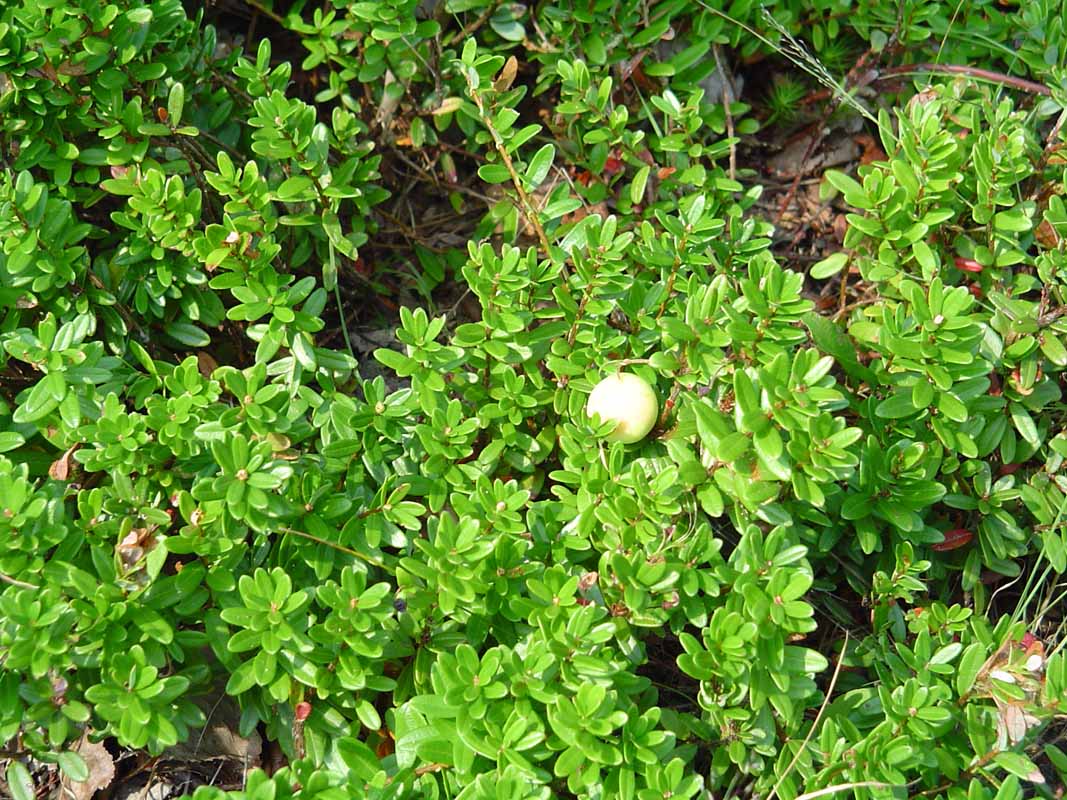
(click on image to enlarge)
Vaccinium myrtilloides (velvet-leaved blueberry) - [information to be added]

(click on image to enlarge)
Vaccinium oxycoccos (small cranberry) - [information to be added]
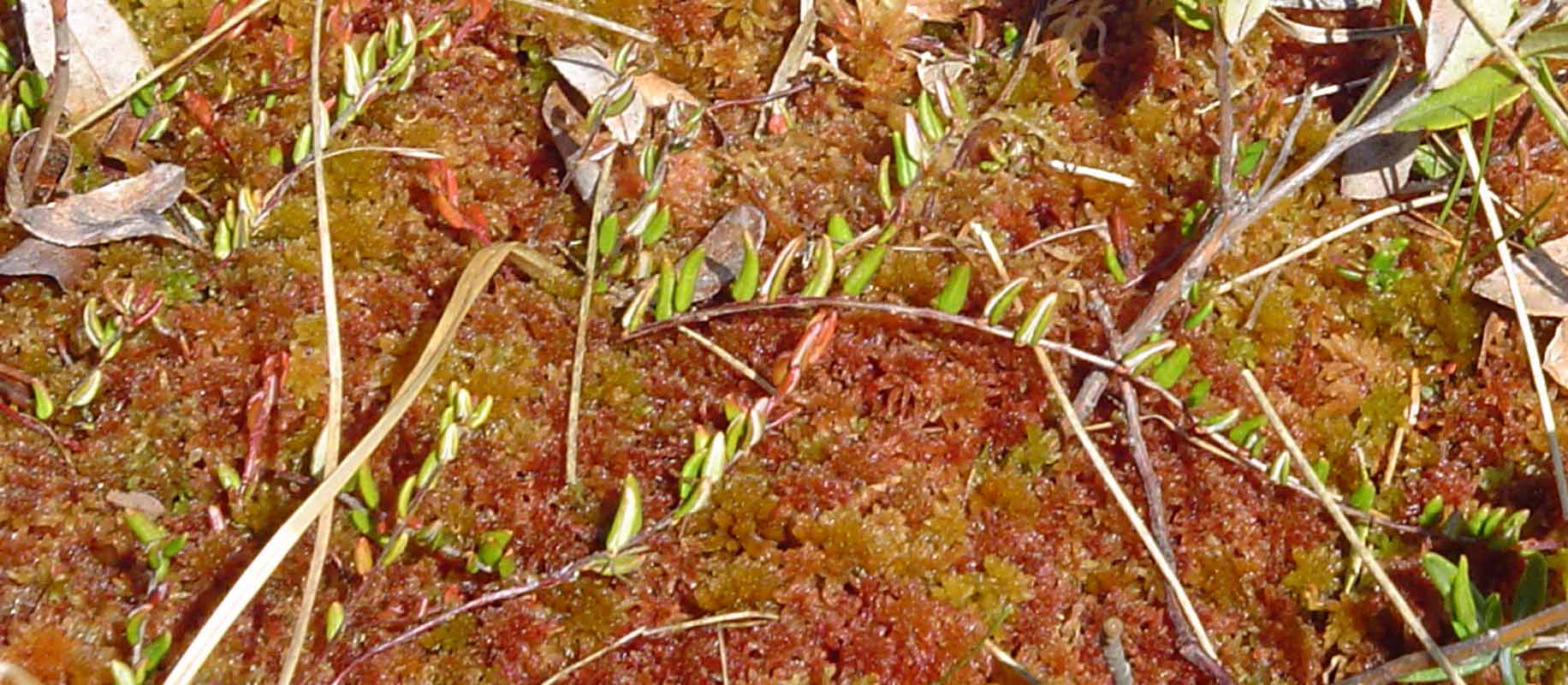
(click on image to enlarge)
Vaccinium vitis-idaea (mountain cranberry) - [information to be added]
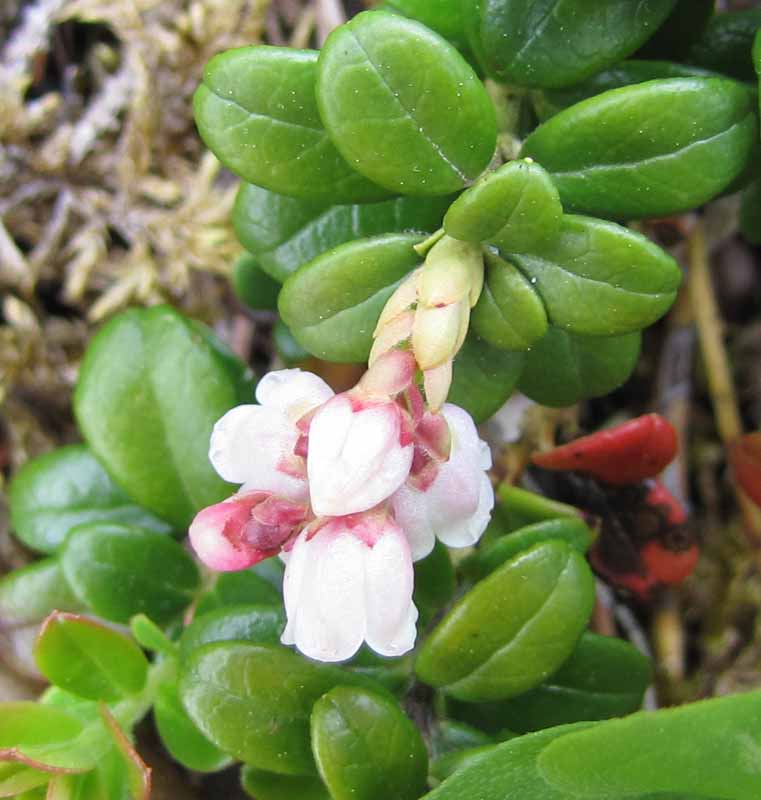
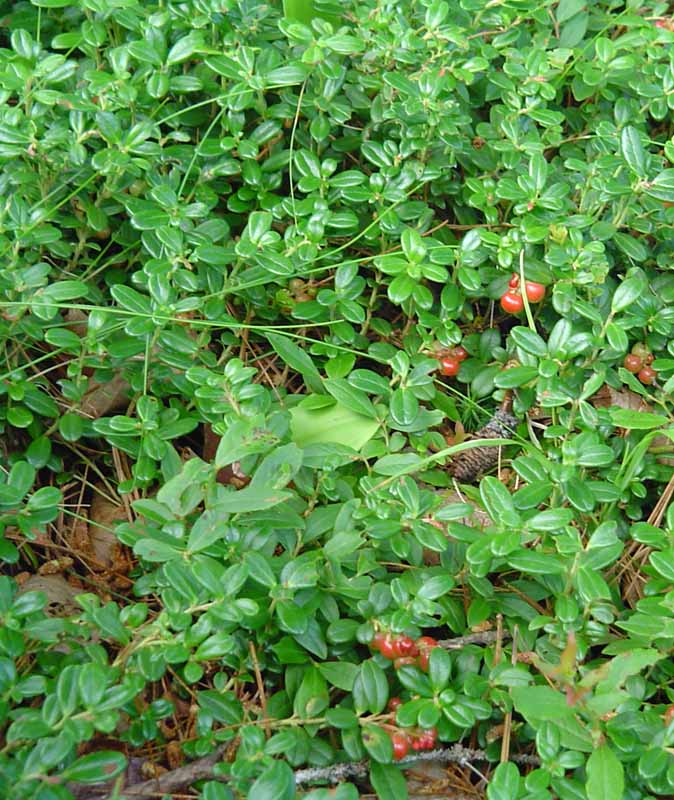
(click on an image to enlarge)
Note:
1. Frequency designations are from the paper “Vascular flora of the Acadia National Park region, Maine” by Craig W. Greene, Linda L. Gregory, Glen H. Mittelhauser, Sally C. Rooney, and Jill E. Weber, published in the spring 2005 issue (vol. 107, No. 930) of Rhodora: Journal of the New England Botanical Club.